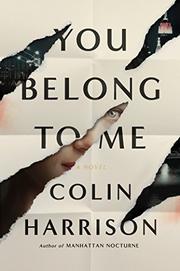You Belong to Me Colin Harrison (2017)
Somehow I missed the word “thriller” in the blurbs about this book. Thrillers give me nightmares, so I rarely read them. I thought that You Belong to Me was a literary novel about a map collector. Hah!
Paul Reeves, a 50-year-old collector of old maps of New York City, is indeed a central character, but his quest to acquire rare and pricey specimens is only one of several plot lines that novelist Harrison leads his readers through. Paul’s girlfriend, Rachel, has a little scheme of her own. Then there’s the story of Billy, a tough former Army Ranger from Texas navigating contemporary New York as he tries to win back his gorgeous girlfriend, Jennifer, who’s now married to someone else. That someone else is Ahmed, a prominent Iranian-American financier with relatives who came through the 1979 revolution in Iran with plenty of guerilla survival skills. And guerilla tactics are part of the arsenal of Mexican bodybuilder and hitman Hector, who also gets involved. All of these plots play out on the streets of New York, as we elbow through the lunchtime crowds in Rockefeller Center to reach Christie’s for a map auction, as we creep down a squalid back street behind a grimy weight-lifting gym, as we careen along the Belt Parkway with a murderer in pursuit.
Yes, several gruesome murders take place in the noir New York of You Belong to Me. I tried to zip through those passages quickly, lingering more over paragraphs such as this one, describing a map from 1776: “The large map showed, in stunning detail, the charming young city of New York set amid farm fields, swamps, ponds, streams, and woods, complete with harbor soundings in fathoms. Only months later, in September of that year, much of the southern tip of the city would be consumed in a ghastly fire that broke out in a bordello frequented by British sailors . . . The map also depicted the quaint little village of Brooklyn, spelled ‘Brookland’, and nearby the marshy water of Wallabout Bay . . . The map’s lines were crisp, the detail so magnificent that actual wisps of smoke from individual houses were depicted. Such beauty and precision and provenance made the map fantastically important.” (78)
The title of the novel reveals the theme that unites the narrative: possession. Paul wants to own precious maps of his beloved city. Rachel decides that Paul should belong to her and her alone. Billy and Ahmed both want to possess Jennifer. Hitman Hector wants to acquire the money that is owed to him. Watch out for that greed, New Yorkers! Colin Harrison has your number, and he punches it with impudence and sass. You Belong to Me is the proverbial page-turner, with rapid-fire action and snappy dialogue, but the characters, with all their failings and evil deeds, are strangely endearing. Read this one even if, like me, you don’t usually care for thrillers.
























